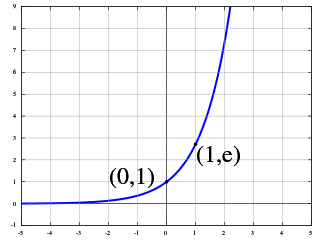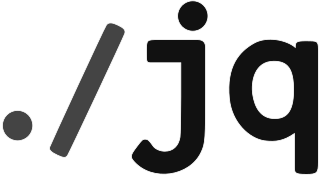Examples
Python
Tacit programming can be illustrated with the following Python code. A sequence of operations such as the following:
defexample(x):returnbaz(bar(foo(x)))... can be written in point-free style as the composition of a sequence of functions, without parameters: [3]
fromfunctoolsimportpartial,reducedefcompose(*fns):returnpartial(reduce,lambdav,fn:fn(v),fns)example=compose(foo,bar,baz)For a more complex example, the Haskell code p = ((.) f) . g can be translated as:
p=partial(compose,partial(compose,f),g)Functional programming
A simple example (in Haskell) is a program which computes the sum of a list of numbers. We can define the sum function recursively using a pointed style (cf. value-level programming) as:
sum(x:xs)=x+sumxssum[]=0However, using a fold we can replace this with:
sumxs=foldr(+)0xsAnd then the argument is not needed, so this simplifies to
sum=foldr(+)0which is point-free.
Another example uses function composition:
pxyz=f(gxy)zThe following Haskell-like pseudo-code exposes how to reduce a function definition to its point-free equivalent:
p=\x->\y->\z->f(gxy)z=\x->\y->f(gxy)=\x->\y->(f.(gx))y=\x->f.(gx)(*Heretheinfixcomposeoperator"."isusedasacurriedfunction.*)=\x->((.)f)(gx)=\x->(((.)f).g)xp=((.)f).gFinally, to see a complex example imagine a map filter program which takes a list, applies a function to it, and then filters the elements based on a criterion
mfcriteriaoperatorlist=filtercriteria(mapoperatorlist)It can be expressed point-free [4] as
mf=(.map).(.).filterNote that, as stated previously, the points in 'point-free' refer to the arguments, not to the use of dots; a common misconception. [5]
A few programs have been written to automatically convert a Haskell expression to a point-free form.
APL family
In J, the same sort of point-free code occurs in a function made to compute the average of a list (array) of numbers:
avg=:+/%#+/ sums the items of the array by mapping (/) summation (+) to the array. % divides the sum by the number of elements (#) in the array.
Euler's formula expressed tacitly:
cos=:2o.]sin=:1o.]Euler=:^@j.=cosj.sin(j. is a primitive function whose monadic definition is 0j1 times x and whose dyadic definition is x+0j1×y.) The same tacit computations expressed in Dyalog APL:
avg←+⌿÷≢cos←2○⊢sin←1○⊢EulerCalc←cos+0j1×sin⍝ 0j1 is what's usually written as i EulerDirect←*0J1×⊢⍝ Same as ¯12○⊢ ⍝ Do the 2 methods produce the same result? EulerCheck←EulerDirect=EulerCalcEulerCheck¯11231111⍝ Yes, so far so good!Stack-based
In stack-oriented programming languages (and concatenative ones, most of which are stack based[ citation needed ]), point-free methods are commonly used. For example, a procedure to compute the Fibonacci numbers might look like the following in PostScript:
/fib{dupdup1eqexch0eqornot{dup1subfibexch2subfibadd}if}defPipelines
Unix pipeline
In Unix scripting the functions are computer programs which receive data from standard input and send the results to standard output. For example,
sort|uniq-c|sort-rn is a tacit or point-free composition which returns the counts of its arguments and the arguments, in the order of decreasing counts. The 'sort' and 'uniq' are the functions, the '-c' and '-rn' control the functions, but the arguments are not mentioned. The pipe '|' is the composition operator.
Due to the way pipelines work, it is only normally possible to pass one "argument" at a time in the form of a pair of standard input/output stream. Although extra file descriptors can be opened from named pipes, this no longer constitutes a point-free style.
jq
jq is a JSON-oriented programming language in which the '|' symbol is used to connect filters to form a pipeline in a familiar way. For example:
[1,2] | add
evaluates to 3. (Yes, the JSON array is a jq filter that evaluates to an array.)
Although similar to Unix pipelines, jq pipelines allow the incoming data to be sent to more than one recipient on the RHS of the '|' as though in parallel. For example, the program `add/length` will compute the average of the numbers in an array, so that:
[1,2] | add/length
evaluates to 1.5
Similarly:
[1,2] | [length, add, add/length]
evaluates to [2,3,1.5]
A dot ('.') can be used to define an attachment point on the RHS, e.g.:
1 | [., .]
evaluates to [1,1]
and similarly:
2 | pow(.; .)
evaluates to 4 since pow(x;y) is x to the power y.
Fibonacci sequence
A tacit jq program for generating the Fibonacci sequence would be:
[0,1] | recurse( [last, add] ) | first
Here, [0,1] is the initial pair to be taken as the first two items in the Fibonacci sequence. (The pair [1,1] could likewise be used for the variant definition.)
The alphabetic tokens are built-in filters: `first` and `last` emit the first and last elements of their input arrays respectively; and `recurse(f)` applies a filter, f, to its input recursively.
jq also allows new filters to be defined in a tacit style, e.g.:
def fib: [0,1] | recurse( [last, add] ) | first;
Composition of unary functions
In the section on Python in this article, the following Python definition is considered:
defexample(x):returnbaz(bar(foo(x)))In point-free style, this could be written in Python as:
example=compose(foo,bar,baz)In jq, the equivalent point-free definition would be:
def example: foo | bar | baz;





